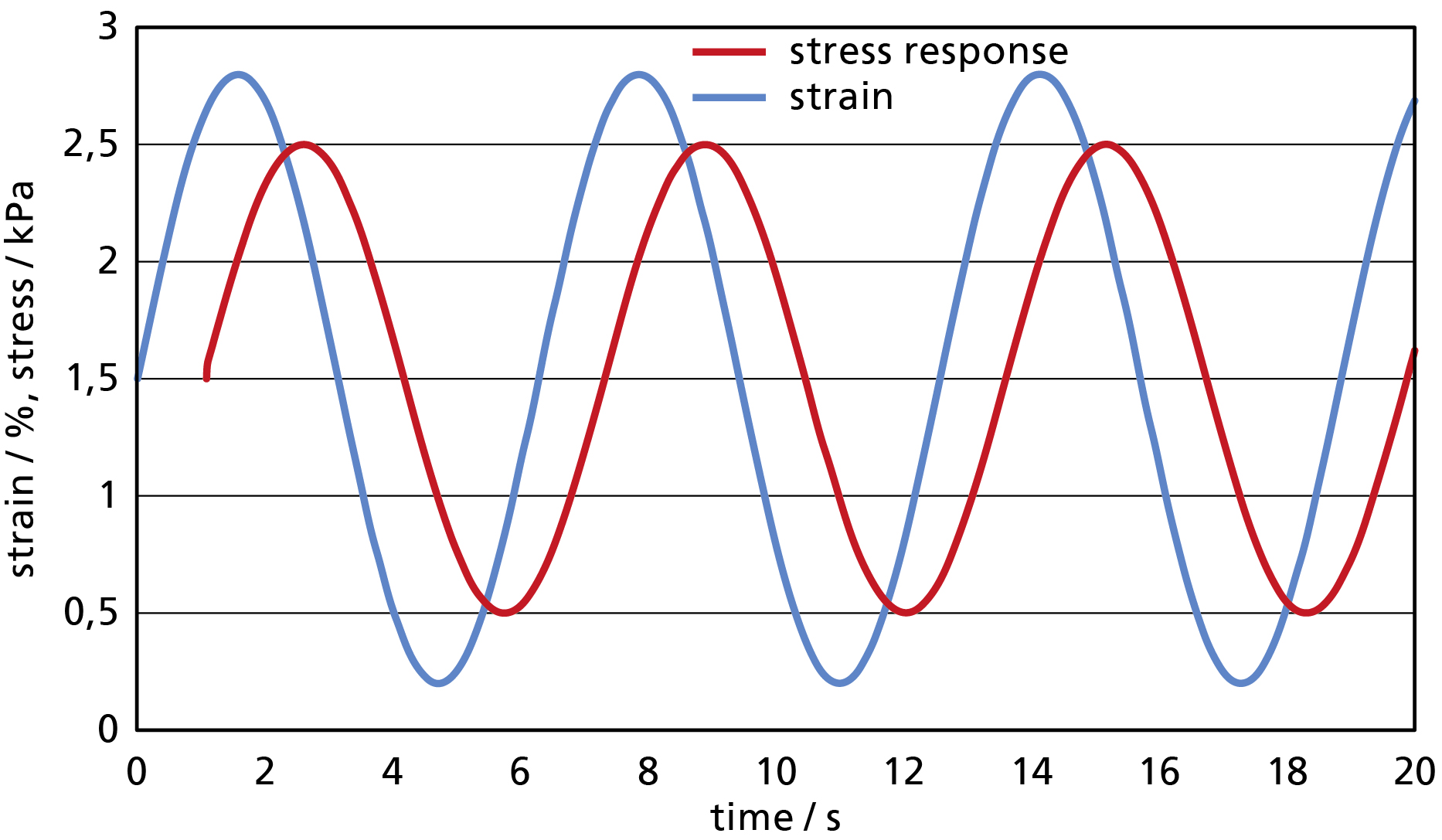The knowledge of the relevant structural and flow properties of a material is an important basis for the assessment whether the material is suitable for a given application. In addition, this information is a crucial part of the input data for our flow and material simulations.
Dynamic Mechanical Thermal Analysis (DMTA)
DMT-Analysis is based on the controlled application of a displace-ment or a force to a sample at a specific fixed or oscillatory rate. During the application of a force, the corresponding displace-ment is measured (or vice versa), such that the mechanical strains and stresses are determined. Examining a material sample with such a cyclic experiment for different frequencies, amplitudes and temperatures mechanically characterizes its visco-elasto-plastic behavior.






